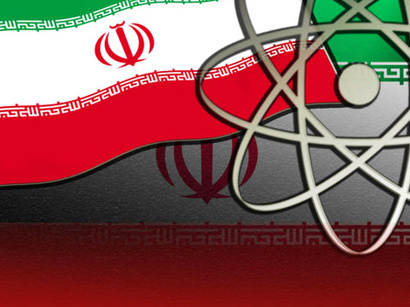Diplomats: Iran expands nuke technology for program that could be used to make weapons

Iran is moving ahead to update a program the West fears could be
used to make nuclear weapons, diplomats said on May 22, despite
high-level diplomacy aimed at stopping it from doing so, AP
reported.
Three diplomats said Tehran now has installed close to 700
high-tech centrifuges in an upgrade of its uranium enrichment
program since the start of the year.
That represents an increase of about 100 since mid-April, when
diplomats first told The Associated Press that Iran was rapidly
installing the equipment.
Tehran says it is enriching uranium only for peaceful uses. But the
U.S. and its allies fear it may enrich to levels used for nuclear
bombs.
The Islamic Republic is under U.N. Security Council and other
sanctions for refusing to stop enrichment and the International
Atomic Energy Agency is attempting to probe suspicions it may have
worked on nuclear weapons.
But other countries say there is no proof that Iran intends to use
the technology for weapons, and they support Iran's claim that
Security Council sanctions because of its refusal to stop enriching
are illegal.
The International Atomic Energy Agency is expected to report on the
centrifuge installations Wednesday. The diplomats, all from IAEA
member nations, demanded anonymity because they are not authorized
to divulge confidential IAEA information. Two are from countries
critical of Tehran's nuclear program while the third is considered
neutral.
The new IR-2m centrifuges are believed to be able to enrich two to
five times faster than the old machines.
For nations fearing that Iran may want to make nuclear arms, that
would mean a quicker way of getting there.
Ali Asghar Soltanieh, Iran's chief IAEA representative, said he
would not comment ahead of the IAEA report. IAEA spokeswoman Gill
Tudor said the agency would not comment.
The IAEA first reported initial installations in February. It said
then that agency inspectors counted 180 of the advanced IR-2m
centrifuges at Natanz, Tehran's main enrichment site, less than a
month after Iran's Jan. 23 announcement that it would start
installing them.
The diplomats said none of the machines appeared to be operating
and some may only be partially set up. But the rapid pace of
installations indicates that Iran possesses the technology and
materials to mass-produce centrifuges that can enrich much faster
than its present machines.
Iranian nuclear chief Fereidoun Abbasi said earlier this year that
more than 3,000 high-tech centrifuges have already been produced
and will soon phase out the more than 12,000 older-generation
enriching machines at Natanz, south of Tehran.
The IAEA report also is expected to mention that Tehran has put in
hundreds more of those old machines even as it expands its upgrade
with new centrifuges.
The diplomats said the agency will also note Iran's decision to
keep its stockpile of uranium enriched to a level just a technical
step away from weapons-grade to below the amount needed for a
bomb.
Two of the diplomats also said that Iran has begun converting a
small reactor to test fuel for a bigger reactor now being built
that the U.S. and its allies say will yield enough plutonium for
several bombs a year.
The large reactor is being built at Arak, southwest of Tehran,
while the tests are being planned at the nuclear research facility
at Isfahan, in central Iran.
Tehran says the Arak facility will go on line early next year, but
experts say the earliest they expect that to happen is 2015.
Iran says the Arak reactor will be used only for research and other
peaceful purposes, adding it has no intention of reprocessing
plutonium for weapons use.
More than six years of international negotiations have failed to
persuade Tehran to stop enrichment and mothball the Arak
reactor.
Here we are to serve you with news right now. It does not cost much, but worth your attention.
Choose to support open, independent, quality journalism and subscribe on a monthly basis.
By subscribing to our online newspaper, you can have full digital access to all news, analysis, and much more.
You can also follow AzerNEWS on Twitter @AzerNewsAz or Facebook @AzerNewsNewspaper
Thank you!
